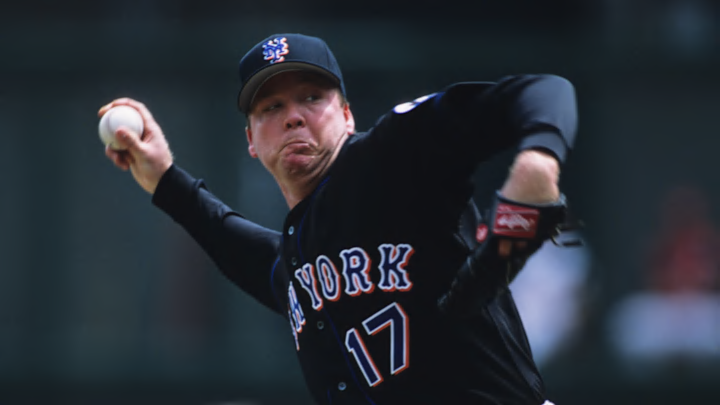What do you do when you come up short on winning it all? You go out and try to get even better the next season. This is what the New York Mets were supposed to accomplish in the winter of 2000-2001.
After falling to the New York Yankees four games to one in the World Series, the club had a winter to recover, rebound, and revitalize the roster. Did they do enough?
What the Mets did in the 2000-2001 offseason
The Mets lost two of their big acquisitions prior to the 2000 season early on in free agency. The pair, brought over together in a trade with the Houston Astros, both found new homes. Mike Hampton fled to join the Colorado Rockies for the fantastic school districts. Derek Bell spent his end days with the Pittsburgh Pirates.
Shortly after they knew these two weren’t coming back, the Mets got to work.
On December 11, 2000, the Mets were busy. They signed starting pitchers Kevin Appier and Steve Trachsel hoping at least one of them could give them the kind of season Hampton did in 2000. Tsuyoshi Shinjo was brought in as a free agent from Japan. Outfielder Bubba Trammell was traded to the San Diego Padres for Donne Wall.
The Mets would lose more players that month. Infielders Kurt Abbott and Mike Bordick left in free agency with few tears of Mets fans following behind. Rey Ordonez was healthy again. They were expendable.
The rest of the winter was spent making minor moves, watching other players leave in free agency, and hoping they already had enough in place. It turned out to be a mistake.
The Mets offseason was over already
The 2001 Mets were an 82-80 club with its most notable moment coming in the first game after 9/11 when Mike Piazza hit his famous home run. While that moment was iconic, it’s obvious the 2001 Mets were not equipped to go as far as they did the year prior.
The main starting eight were holdovers from 2000. Even though the 2000 Mets offense lacked the same juice the 1999 team had, nothing was done to improve it drastically in the offseason. They attempted to correct this at the trade deadline when they moved Rick Reed to the Minnesota Twins for Matt Lawton. Apparently, they thought he was expendable enough.
It was a rough year for a lot of Mets players. Edgardo Alfonzo missed a lot of time due to injury and batted only .243. Robin Ventura also saw his numbers decline with an end-of-season batting average of only .237.
The pitching staff wasn’t quite what it was a year prior either. Al Leiter was good and Appier certainly seemed to help eat up innings and win games with his 11-10 record and 3.57 ERA. Unfortunately, the rest of the starting staff (outside of Reed) would finish with ERAs well above .400 and the bullpen got knocked around.
Closer Armando Benitez finished with a 3.77 ERA. Among relievers with 40 or more innings pitched, Jerrod Riggan was the only one with an ERA below 3.50.
The Mets actually scored the fewest runs of any team in 2001 with only 642 runners crossing the plate. Despite mediocre numbers, their pitching staff was actually one of the better ones at preventing runners from scoring. They allowed the seventh-fewest number of runs to score.
A team’s success often has a lot to do with what the front office did in the offseason. The 2001 Mets offseason wasn’t iconic and it’s the reason why a third straight playoff appearance wouldn’t happen.
